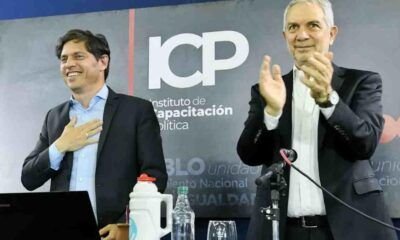INTERNACIONAL
India’s Modi gives army freedom to act as tensions rise with Pakistan after deadly terror attack
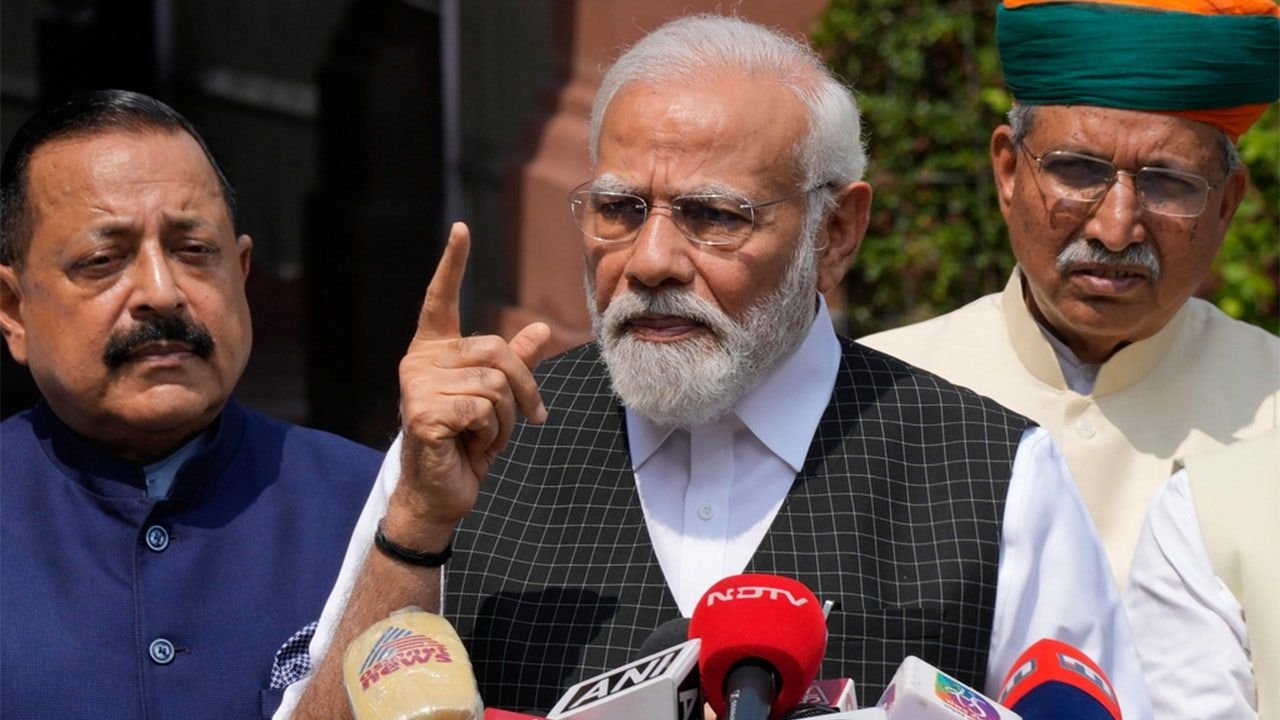
India’s Prime Minister, Narendra Modi, is giving the armed forces near complete freedom of action to respond following a deadly attack on tourists in the disputed Jammu and Kashmir region on April 22 that saw 26 people killed by terrorists. India and Pakistan have exchanged fire every day since the attack along the Line of Control that separates the Indian and Pakistani areas of Kashmir.
The Times of India reported on Tuesday that Modi has given the military the operational freedom to decide on the mode, targets, and timing of the response to the attack in Kashmir.
PAKISTAN FEARS INDIA INCURSION ‘IMMINENT’ AMID HEIGHTENED TENSIONS FOLLOWING TERROR ATTACK
Kashmiri villager women walk past the blown-up family home of Asif Shiekh, a militant who officials all is involved in the deadly attack on tourists in Pahalgam, at Monghama village in Tral, south of Srinagar, Indian controlled Kashmir, Friday, April 25, 2025. (AP Photo/Dar Yasin)
Modi is set to convene another meeting of the Cabinet Committee on Security (CCS) on Wednesday to coordinate India’s next moves.
Modi recently said India will «identify, track and punish every terrorist, their handlers and their backers,» in a post on X. «We will pursue them to the ends of the earth,» Modi added.
India’s Defense Minister Khawaja Muhammad Asif told Reuters that the country has mobilized its forces because retaliation is «something which is imminent now.»
The Resistance Front (TRF), an extremist group linked to the Lashkar-e-Taiba terrorist organization based in Pakistan, claimed responsibility for the attack in Pahalgam. Lashkar-e-Taiba was responsible for the 2008 Mumbai attacks and is known to have links with the Pakistani military and a partnership with Pakistan’s Directorate for Inter-Services Intelligence (ISI).
Pakistan has denied any involvement in the attack.
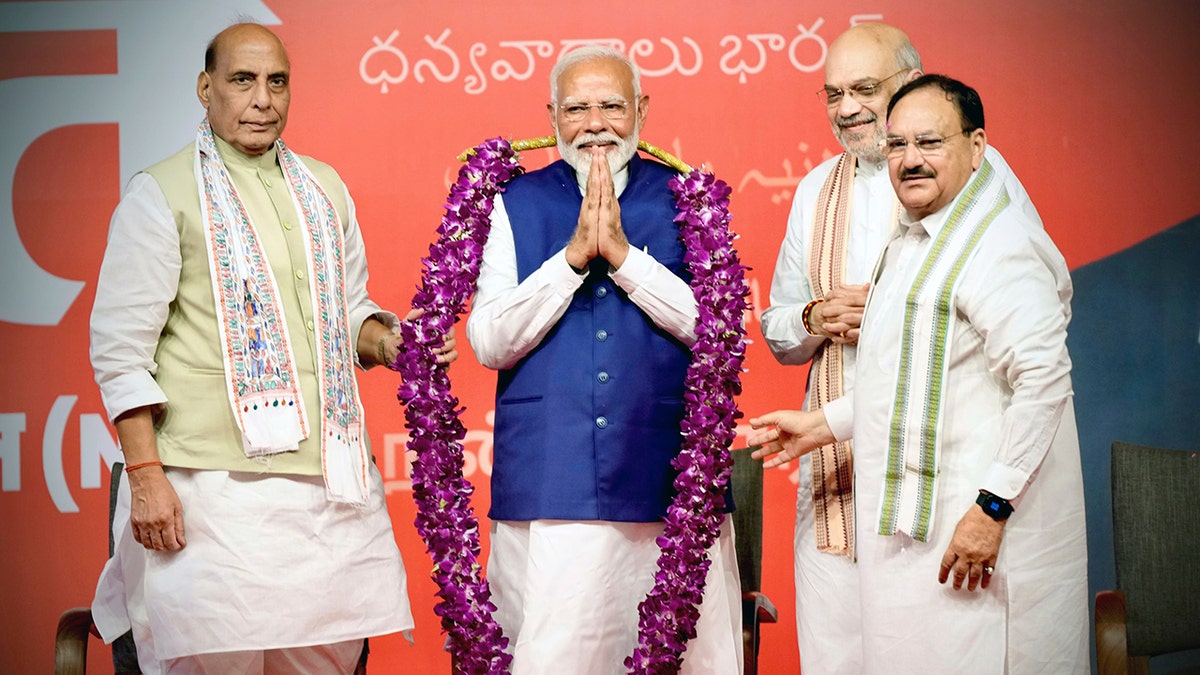
Prime Minister Narendra Modi is garlanded by senior Bharatiya Janata Party (BJP) leaders Rajnath Singh, left, party President JP Nadda, right, and Amit Shah, at the party headquarters in New Delhi, India, Tuesday, June 4, 2024. (AP Photo/Manish Swarup)
The attack, which killed 26 people and was the worst terrorist attack on India since the 2008 Mumbai attacks, has increased tensions on the Indian subcontinent between two nuclear-armed powers.
«An Indian military response is likely reflecting the more muscular foreign policy of the Modi government as noted by its actions following previous terrorist attacks,» Chietigj Bajpaee, senior research fellow for South Asia at Chatham House, told Fox News Digital.
HERE’S WHY A FLARE-UP BETWEEN INDIA AND PAKISTAN OVER KASHMIR MATTERS
Bajpaee noted that a surgical strike or airstrike is the most likely form of retaliation, and the response will likely take a calibrated approach to limit collateral damage and civilian casualties and to control the escalation ladder in order to keep the conflict below the nuclear threshold.
«However, this is easier said than done given the possibility of accidental escalation» and a «broader tit-for-tat military escalation cannot be ruled out,» he warned.
Although there was limited outreach from Modi in the past, two rounds of escalation in 2016 and 2019 have soured relations.
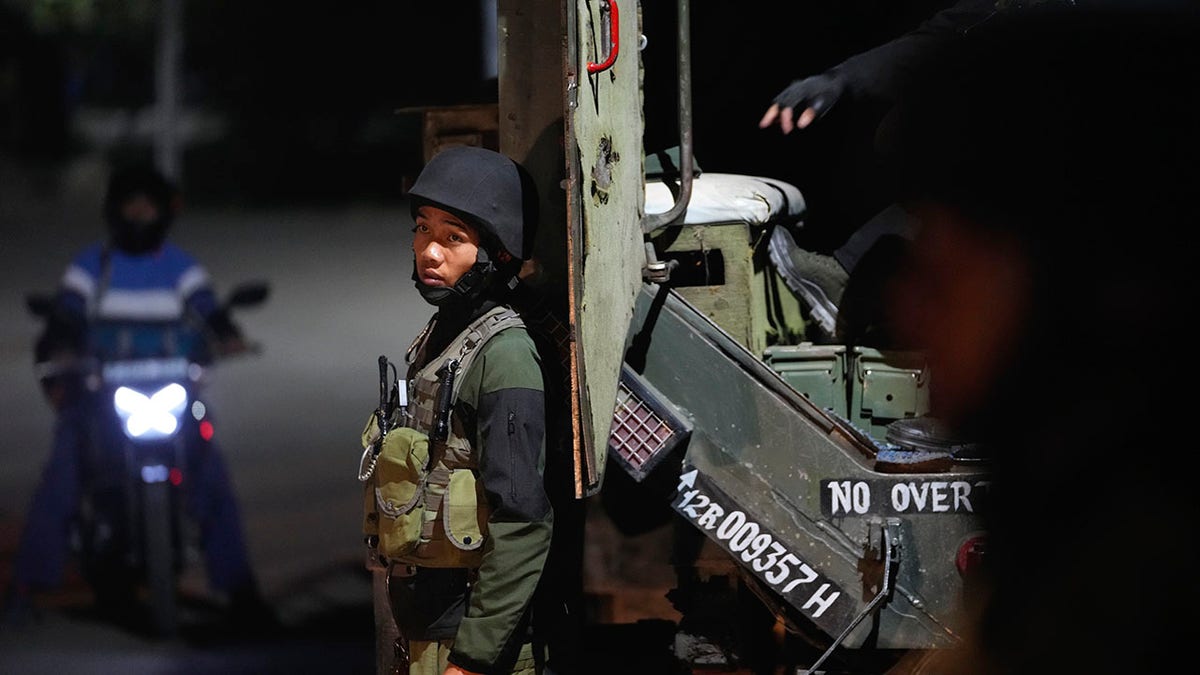
Indian army officers stands guard near Pahalgam in south Kashmir after assailants indiscriminately opened fired at tourists visiting Pahalgam, Indian controlled Kashmir, Tuesday, April 22, 2025. (AP Photo/Dar Yasin)
Sadanand Dhume, senior fellow at the American Enterprise Institute, told Fox News Digital that Modi is facing pressure to mount a tough response.
«The Indian public is outraged by last week’s terrorist attack in Kashmir, and Prime Minister Narendra Modi is under immense pressure to respond to the atrocity by striking Pakistan, which has long sponsored attacks on India,» Dhume said.
INDIA VOWS TO HUNT TERRORISTS ‘TO THE ENDS OF THE EARTH’ AS TENSIONS WITH PAKISTAN RISE AFTER KASHMIR ATTACK
Already India has suspended the landmark 1960 Indus Water Treaty, a key water-sharing agreement covering rivers that overlap both countries. Pakistan’s Minister of State for Law and Justice told Reuters that Islamabad plans on challenging India’s suspension of the treaty and is raising the issue with the World Bank.
Pakistan said the impediment to the free flow of water would constitute an act of war.
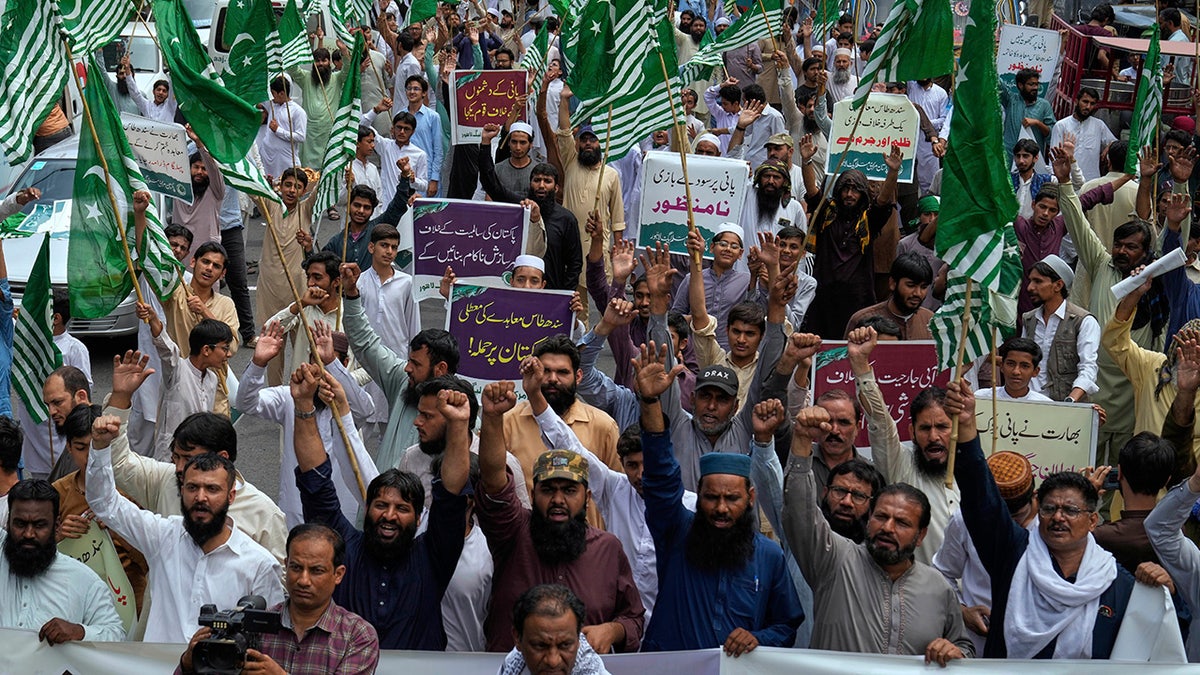
Supporters of the Pakistan Murkazi Muslim League party protest against the suspension of water-sharing treaty by India with Pakistan, in Lahore, Pakistan on Thursday, April 24. (AP/K.M. Chaudary)
The rivalry between India and Pakistan dates back to the partition of the former British colony of India in 1947, with the establishment of Muslim-majority Pakistan and Hindu-majority India. The partition plan also provided the contested regions of Jammu and Kashmir with the opportunity to choose if they wanted to join either newly established nation. Kashmir ultimately decided to join India in exchange for help against invading Pakistani militias, with India and Pakistan fighting three wars over the territory since 1947.
CLICK HERE TO GET THE FOX NEWS APP
India and Pakistan have an estimated combined 342 nuclear warheads, according to the Arms Control Association.
INTERNACIONAL
España: procesaron al Fiscal General, elegido por Pedro Sánchez, por revelar información que perjudica a la presidenta madrileña Isabel Díaz Ayuso
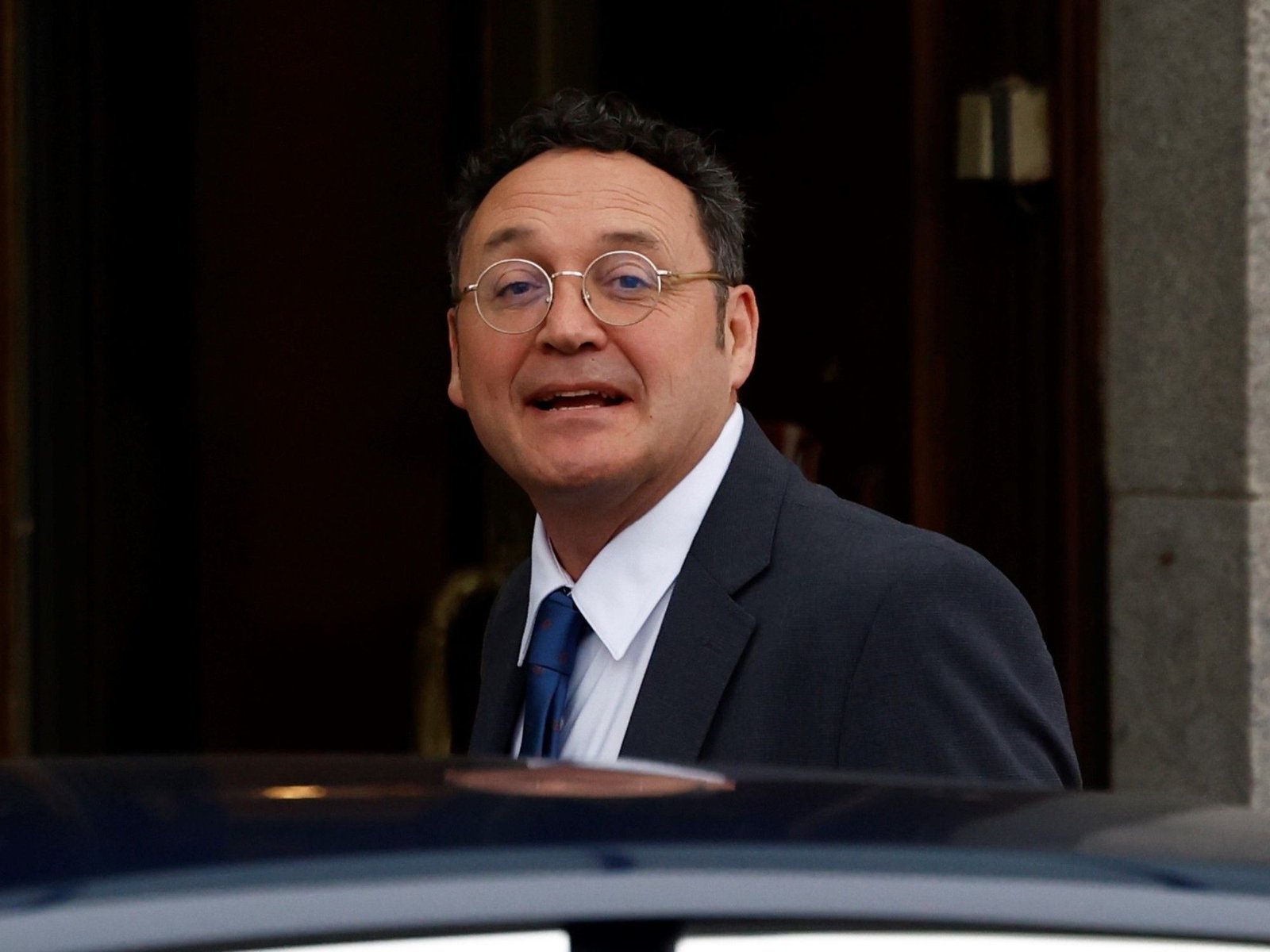
Después de siete meses
Cómo se elige
INTERNACIONAL
UN’s nuclear watchdog warns its unable to confirm Iran’s program is ‘entirely peaceful’
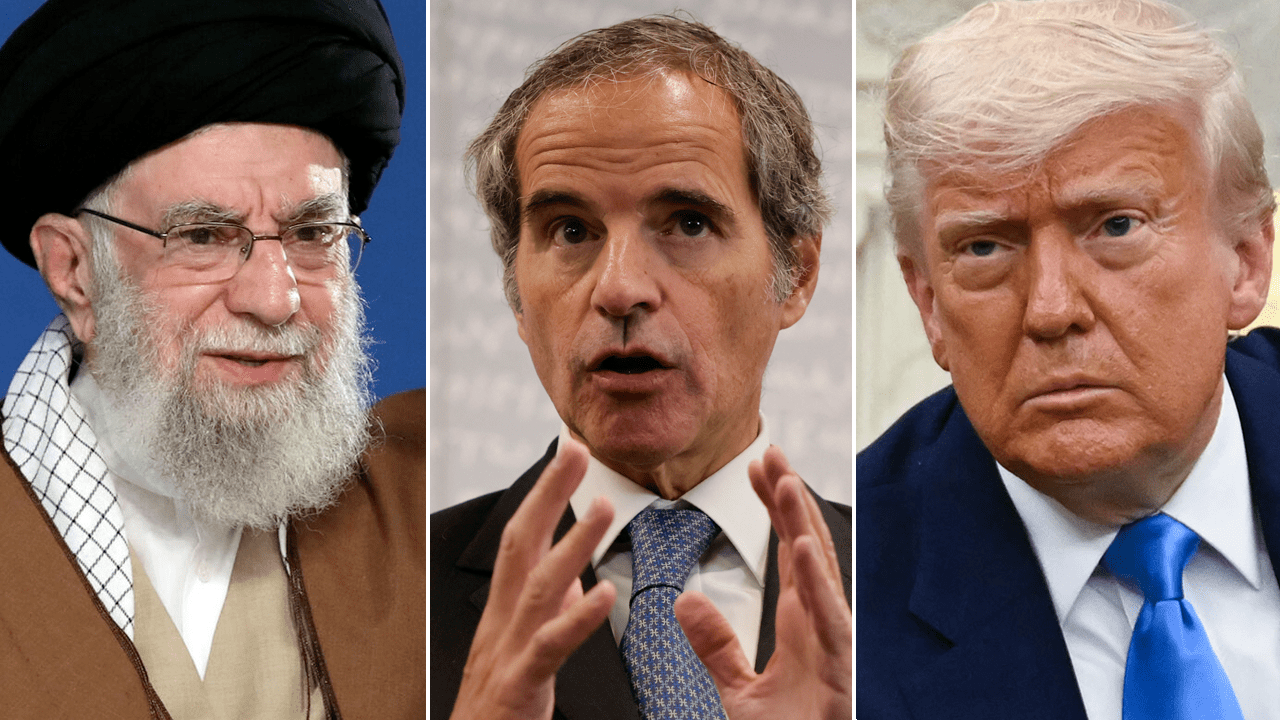
NEWYou can now listen to Fox News articles!
Iran’s refusal to play ball with the United Nation’s nuclear watchdog, which is charged with monitoring all nations’ nuclear programs, has meant the body cannot verify whether Tehran’s program is «entirely peaceful» despite the regime’s claims.
Director General of the International Atomic Energy Agency (IAEA), Rafael Grossi, on Monday issued a warning statement that the agency has not only long been barred access to old and new nuclear sites, but that Iran has scrubbed locations in an apparent move to cover up its activities.
In 2020, the IAEA found man-made particles of enriched uranium at three sites, including Varamin, Marivan and Turquzabad. The locations were previously utilized in Iran’s nuclear program and gave the agency credence to believe Tehran had once again turned to deadly nuclear ambitions.
US SANCTIONS MONEY LAUNDERING NETWORK AIDING IRAN AS REGIME FACES NUCLEAR REPRIMAND AT IAEA
Rafael Grossi is increasingly concerned about Iran’s nuclear program. (Albert Otti/picture alliance via Getty Images)
«Since then, we have been seeking explanations and clarifications from Iran for the presence of these uranium particles, including through a number of high-level meetings and consultations in which I have been personally involved,» Grossi said. «Unfortunately, Iran has repeatedly either not answered, or not provided technically credible answers to, the Agency’s questions.
«It has also sought to sanitize the locations, which has impeded Agency verification activities,» he added.
Grossi, who confirmed during an April trip to Washington, D.C. that the IAEA has not been involved in nuclear negotiations between the U.S. and Iran, said on Monday that he has been working «closely and intensively» with both parties in «support of their bilateral negotiation[s].»
The warning comes after the IAEA in a report late last month, also confirmed that Iran had drastically increased its stockpile of near-weapons-grade enriched uranium by nearly 35% in three months.
IRAN’S KHAMENEI REJECTS US ZERO URANIUM ENRICHMENT DEMAND AS ‘100% AGAINST’ ITS INTERESTS
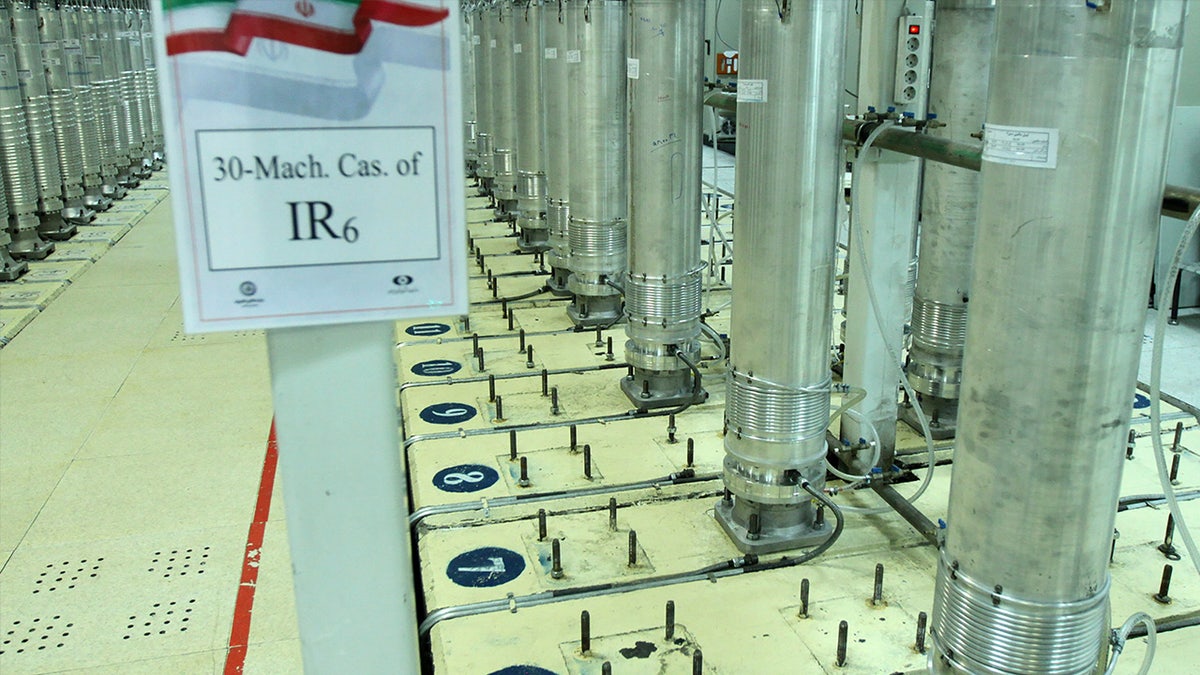
This photo released on Nov. 5, 2019, by the Atomic Energy Organization of Iran shows centrifuge machines in the Natanz uranium enrichment facility in central Iran. (Atomic Energy Organization of Iran via AP, File)
In February, the IAEA assessed that Tehran possessed 274.8 kilograms (605.8 pounds) worth of uranium enriched to 60%, but on May 17th it found Iran now has some 408.6 kilograms (900.8 pounds) – meaning the regime is just a technical step away from being able to make up to 10 nuclear warheads.
Last week, Iranian supreme leader Ayatollah Ali Khamenei came out in strong opposition to a U.S. proposal submitted to Tehran to end its nuclear program, though it remains unclear what details were included in the document, including on enrichment capabilities, and on Sunday, Iranian parliamentary speaker Mohammad Bagher Ghalibaf claimed the proposal didn’t include any sanction relief.
The White House has remained tight-lipped about what was included in the document, though according to some reporting, President Donald Trump gave Iran until June 11 to reach a deal with the U.S., though Fox News Digital could not independently verify these claims.
On Monday, Iranian Foreign Ministry spokesperson Esmaeil Baghaei confirmed that «The U.S. proposal is not acceptable to us. It was not the result of previous rounds of negotiations.»
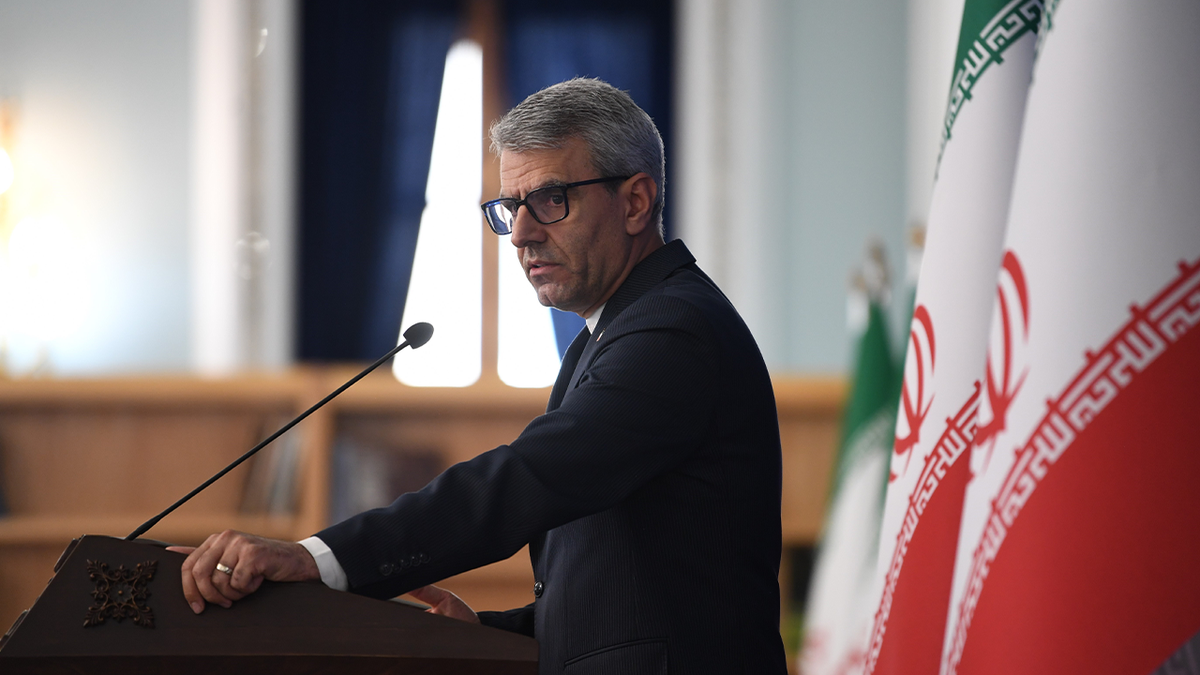
Iranian Foreign Ministry Spokesman Esmaeil Baghaei attends a press conference in Tehran, Iran, on May 26, 2025. An interim nuclear agreement between Iran and the United States is not on Iran’s agenda, Baghaei said. (Shadati/Xinhua via Getty Images)
CLICK HERE TO GET THE FOX NEWS APP
«We will present our own proposal to the other side via Oman after it is finalized. This proposal is reasonable, logical, and balanced,» Baghaei reportedly said.
Some reporting has also suggested Iran might submit their proposal as soon as June 10, though the Iranian UN mission in the U.S. would not comment on or confirm these claims.
INTERNACIONAL
Harris ripped for ‘appalling’ LA ICE raids statement placing blame on Trump: ‘The country dodged a bullet’
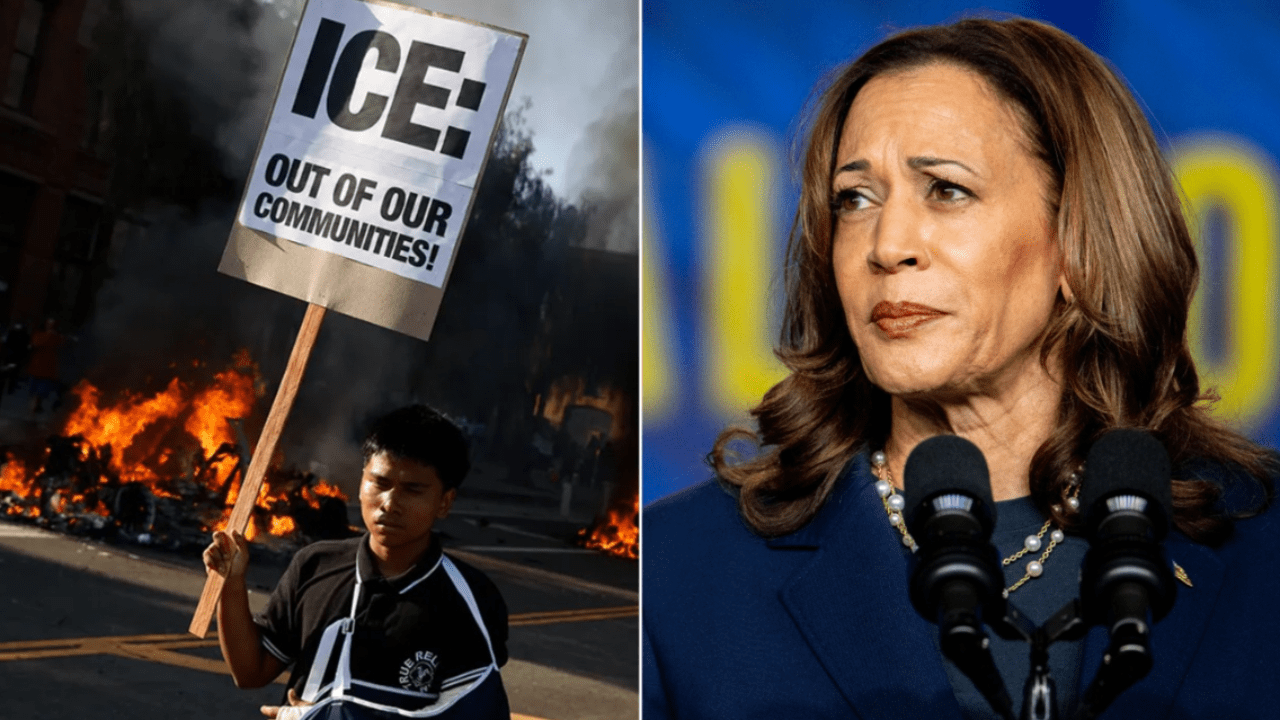
NEWYou can now listen to Fox News articles!
Former Vice President Kamala Harris was slammed by conservatives on social media after she issued a statement on the anti-ICE riots in Los Angeles, blaming the Trump administration and calling the unrest «overwhelmingly peaceful.»
«Los Angeles is my home,» Harris posted Sunday as riots had broken out across the city for several days, led by protesters upset with federal agents arresting illegal immigrants in the city, prompting the Trump administration to send in the National Guard.
«And like so many Americans, I am appalled at what we are witnessing on the streets of our city,» she said. «Deploying the National Guard is a dangerous escalation meant to provoke chaos. In addition to the recent ICE raids in Southern California and across our nation, it is part of the Trump Administration’s cruel, calculated agenda to spread panic and division.»
Harris added that the Trump administration is not concerned about «public safety» but rather «stoking fear.»
ANTI-ICE PROTESTERS IN LOS ANGELES SPIT ON AND BURN AMERICAN FLAG
Former Vice President Kamala Harris was widely mocked on social media by conservatives over her response to the LA anti-ICE riots. (Getty)
«Protest is a powerful tool — essential in the fight for justice. And as the LAPD, Mayor, and Governor have noted, demonstrations in defense of our immigrant neighbors have been overwhelmingly peaceful,» Harris said. «I continue to support the millions of Americans who are standing up to protect our most fundamental rights and freedoms.»
Harris’ comments were immediately criticized by conservatives online and by Trump officials.
«The country really dodged a bullet in November,» Fox News contributor Guy Benson posted on X.
In another post, Benson added, «Their official position is that they’re appalled by what’s happening in Los Angeles…because of Trump and ICE, not the violent rioters. In its current form, this party cannot be salvaged.»
FBI SEARCHING FOR SUSPECT WHO ALLEGEDLY ASSAULTED FEDERAL OFFICER DURING ANTI-ICE RIOTS IN LOS ANGELES
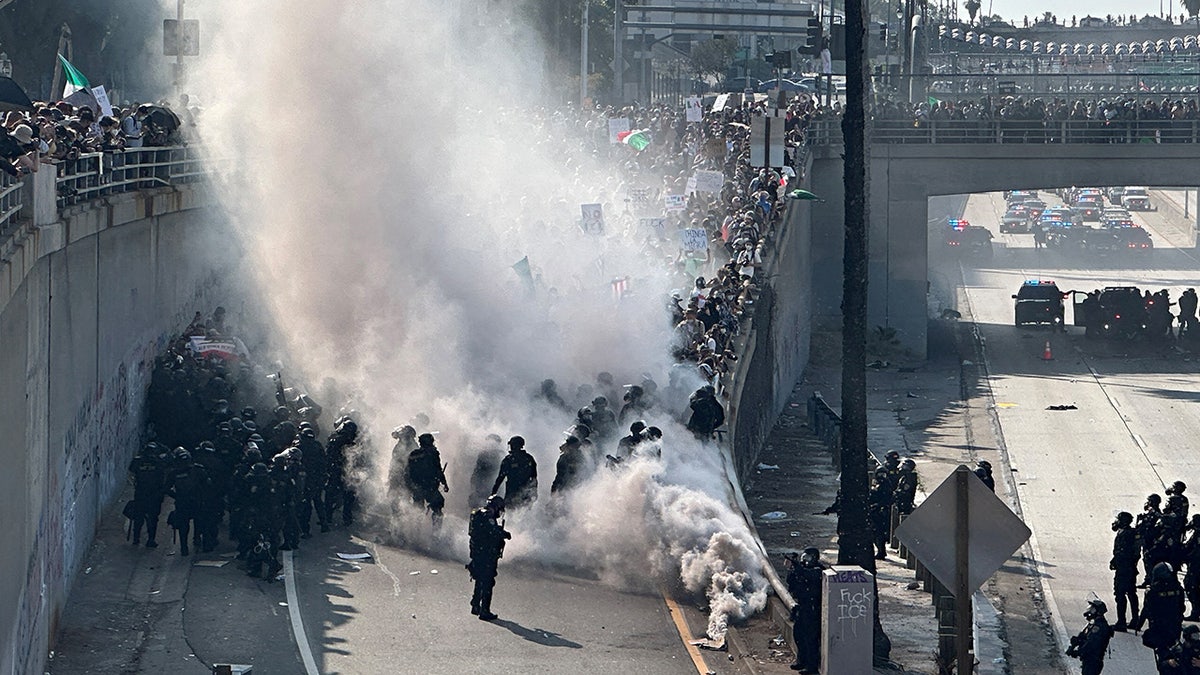
Police officers are enveloped in a cloud of smoke from tear gas and percussion grenades while guarding a highway on-ramp during a protest against federal immigration sweeps in downtown Los Angeles on June 8, 2025. (Omar Younis/Reuters)
«Thank you, America, for employing brain cells and rejecting this woman’s quest to become president of the United States,» Fox News contributor Katie Pavlich posted on X.
Others, including the conservative influencer account LibsofTikTok, took issue with Harris calling the unrest «mostly peaceful» by responding with pictures of rioters burning cars and attacking law enforcement.
«No surprise[sic] that the most incompetent Vice President in history stands with the illegal alien rioters,» GOP Sen. Tom Cotton posted on X.
White House principal deputy press secretary Harrison Fields responded on X by saying, «America’s statement» along with a photo showing the gains President Donald Trump made across the country in the November 2024 election.
«No one is interested in your opinion,» Senior Counsel to the Assistant Attorney General for Civil Rights Leo Terrell posted on X.
«President Trump didn’t start these riots,» California GOP gubernatorial candidate and Riverside County Sheriff Chad Bianco posted on X. «He’s not out there lighting cars on fire, hurling projectiles at law enforcement or blocking freeways. This statement is an embarrassment and does nothing to diffuse the violent riots taking place across the city.»
«The Democrats and their ‘leaders’ own this.»
TRUMP’S ICE LAUNCHES BOLD COURTHOUSE MIGRANT ARREST STRATEGY TO FAST-TRACK DEPORTATIONS BIDEN AVOIDED
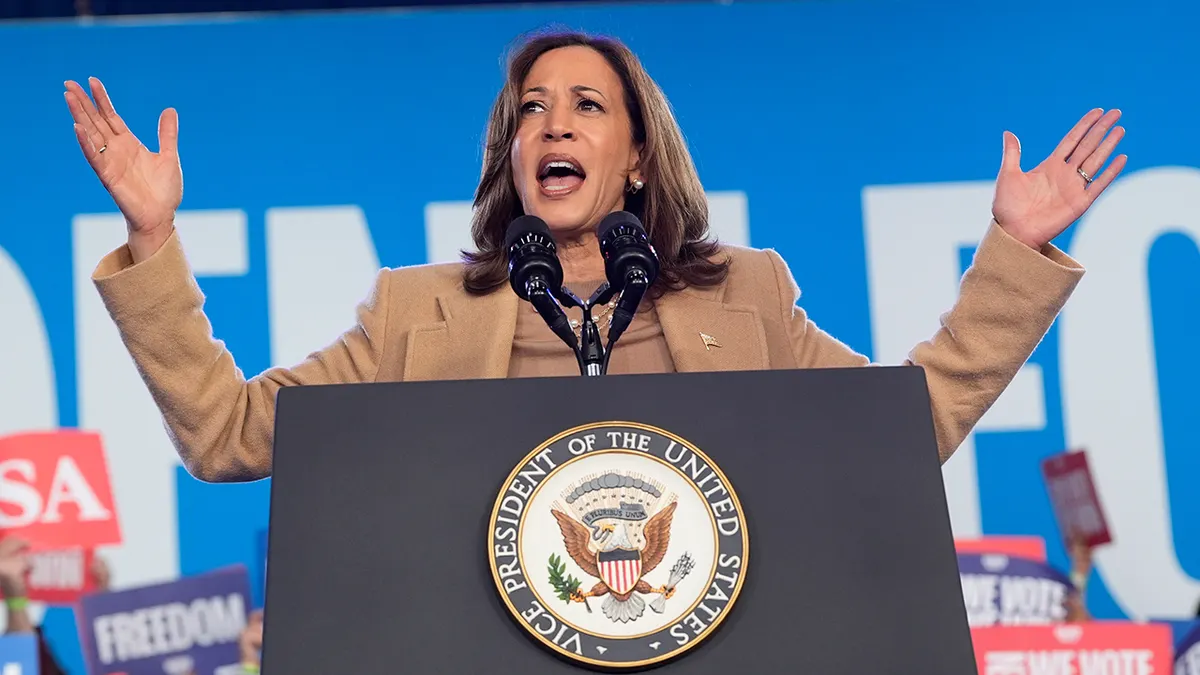
Then-Vice President Kamala Harris speaks during a campaign rally on Saturday, Nov. 2, 2024 at the PNC Music Pavilion in Charlotte, North Carolina. (Jacquelyn Martin/The Associated Press)
Steve Hilton, a Fox News contributor also running for California governor as a Republican, posted on X, «In this appalling statement you are siding with violent criminals over California communities; rioters over law enforcement; illegal immigrants over legal immigrants and American citizens.»
«You are a pandering machine politician who should never hold public office again.»
White House deputy press secretary Abigail Jackson posted on X, «We all know you support lawless, violent, illegal alien rioters. That’s why you lost so badly in November. Back to irrelevancy you go!»
Fox News Digital reached out to Harris’ office for comment but did not receive a reply.
Trump deployed 2,000 National Guard troops to the city in an effort to quell some of the unrest, much to the dismay of Democratic officials.
The violent protests erupted as ICE officials carried out plans to remove individuals illegally residing in the left-wing city, which dubbed itself a «sanctuary» for illegal immigrants in November 2024 before Trump was sworn back into the Oval Office in January.
CLICK HERE TO GET THE FOX NEWS APP
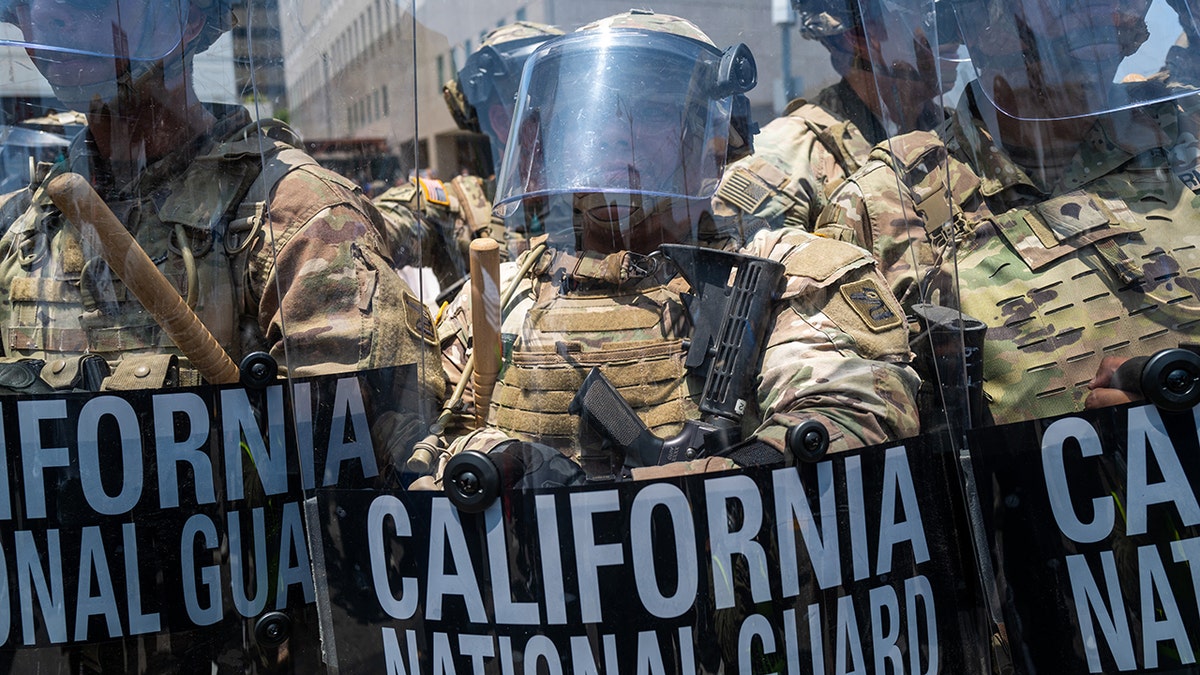
Demonstrators protest outside a downtown jail in Los Angeles following two days of clashes with police during a series of immigration raids on June 8, 2025. (Spencer Platt/Getty Images)
ICE raids began Friday, with Los Angeles Mayor Karen Bass issuing a statement supporting illegal immigrants in the city and bucking the Trump administration’s deportation efforts.
California Gov. Gavin Newsom similarly criticized ICE efforts, branding the immigration raids «chaotic and reckless.»
«Continued chaotic federal sweeps, across California, to meet an arbitrary arrest quota are as reckless as they are cruel,» a statement from the governor read. «Donald Trump’s chaos is eroding trust, tearing families apart, and undermining the workers and industries that power America’s economy.»
During the riots, ICE officers were targeted with violence that included throwing rocks and other projectiles along with vandalism in the form of graffiti calling for violence against ICE officers.
U.S. Border Patrol Chief Michael Banks shared a photo of one Border Patrol agent’s bloody hand, which was injured by a rock flying through the windshield. Federal sources said agents could have been killed by the flying debris and several officers have been reported as injured during the rioting.
ICE agents captured the «worst of the worst» criminal illegal immigrants during Friday operations, including murderers, sex offenders and other violent criminals, the agency said Sunday.
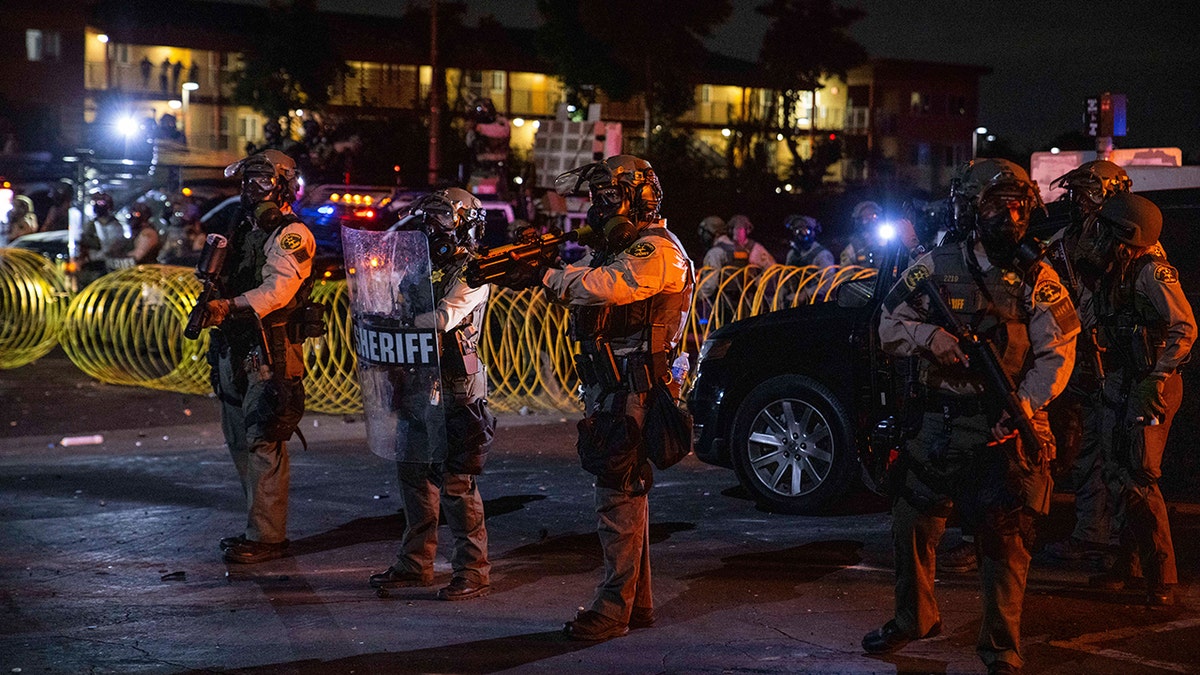
Los Angeles County Sheriffs stand during a protest in Compton, California, on Saturday, June 7, 2025 after federal immigration authorities conducted operations. (AP Photo/Ethan Swope)
About 45 people were arrested across several locations, including two Home Depot stores, a store in the fashion district and a doughnut shop.
«Why do Governor Newsom and Los Angeles Mayor Karen Bass care more about violent murderers and sex offenders than they do about protecting their own citizens?» asked Department of Homeland Security Assistant Secretary Tricia McLaughlin.
«These rioters in Los Angeles are fighting to keep rapists, murderers, and other violent criminals loose on Los Angeles streets,» she said. «Instead of rioting, they should be thanking ICE officers every single day who wake up and make our communities safer.»
Fox News Digital’s Taylor Penley, Emma Colton, Greg Wehner and Bill Melugin contributed to this report.
-

 POLITICA2 días ago
POLITICA2 días agoCristina Kirchner advirtió que la pueden “meter presa” y lo relacionó con su candidatura a diputada provincial
-
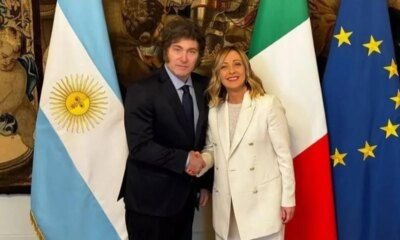
 ECONOMIA3 días ago
ECONOMIA3 días agoUn proyecto de u$s100.000 millones: claves del acuerdo entre Milei y Meloni para exportar gas de Vaca Muerta
-

 POLITICA3 días ago
POLITICA3 días agoTras la muerte de Thiago, Patricia Bullrich redobló su defensa del policía y pidió perpetua para los tres ladrones













